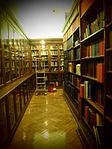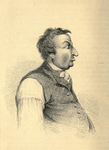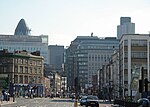Museum of Transology
2014 establishments in EnglandCollections of museums in the United KingdomEngvarB from June 2023Transgender organisations in the United Kingdom
The Museum of Transology (MoT) is a collection of objects and community archive representing the lives of transgender, non-binary and intersex people, curated by its founder E-J Scott. It is one of the first known collections of transgender artifacts, and as of 2019, it was the world’s largest collection of material culture relating to transgender lives. It has appeared in exhibitions and holdings at the London College of Fashion, Brighton Museum & Art Gallery, the Bishopsgate Institute, the Whitechapel Gallery, and the Barbican Centre.
Excerpt from the Wikipedia article Museum of Transology (License: CC BY-SA 3.0, Authors).Museum of Transology
Bishopsgate, City of London
Geographical coordinates (GPS) Address Website Nearby Places Show on map
Geographical coordinates (GPS)
| Latitude | Longitude |
|---|---|
| N 51.518688888889 ° | E -0.079316666666667 ° |
Address
LOH Japandi Kitchen
Bishopsgate 228
EC2M 4QD City of London
England, United Kingdom
Open on Google Maps











